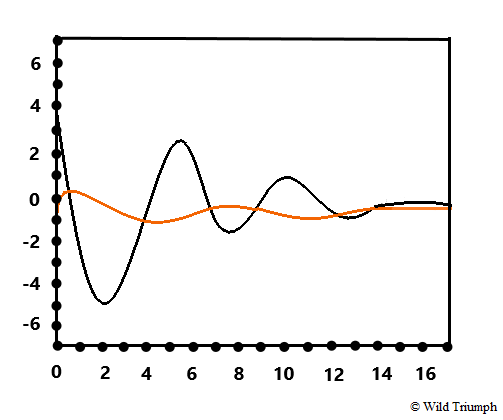How to keep your Motorcycle Battery charged during winters
Updated on | By Mohit Chauhan

Reader Disclosure
Our editorial content is reader-supported. If you click on some of our links, we may earn a small commission. Learn more here.Winter is approaching, although it is the time of year where some adrenaline seekers indulge in offbeat riding, leaving them aside, for the rest of us, now is the best time to prepare an action plan on winterizing the motorcycle. As obvious as it may sound, storing your bike is not easy, and we have often seen riders neglecting the most crucial component of their motorcycle; the battery.
The way our motorcycle hibernates on many occasions is detrimental to most of its parts, but especially to the battery, which if not taken care of, can get damaged, and in worst case cause permanent malfunction to electrical components attached to its terminals.
Why do we need to keep motorcycle battery charged?
You may have experienced this personally or heard from your fellow rider; a motorcycle battery often causes more problems than a car battery. Sadly, this is true and the reason is simple; motorcycles are used seasonally, more in good weather and less during the cold season. And it is this long interval that causes your battery to suffer. You may be wondering why an unused motorcycle battery gets discharged? The reason is, even if the motorcycle is not switched on, dispersion still occurs at the terminals. A conventional battery loses about 0.15% to 0.2% of its charge each day if the motorcycle is not started (4-5% per month).

In fact, it may happen that your battery terminals may form a circuit with the charged particles present in the air until it is completely dead. This may not be visible to the naked eye, but happens in most of the cases. So even if you have completely removed the battery from the motorcycle, it is important to apply grease on the terminals before storing it in a dry place.
However, one of the main problems we find as consumers in the field of batteries is the different types of motorcycle batteries that are used. The motorcycle fleet is so diverse that you may find different battery types in different vehicles. Although their output and technical specifications remains the same, but the nature of maintenance does get changed. Hence, we must first be very clear about what type of battery we have on our motorcycle and what should be kept in mind while preserving them.
Types of Motorcycle Battery
If you are dealing with batteries, you first need to know the type of battery. Batteries are mainly divided into two types, Lead-acid batteries and Lithium-ion batteries. Lead acid batteries can be further divided into Open type and Maintenance free type.
Lead Acid battery (Open type)
The open lead battery is a standard battery that has been around for a long time. As the name suggests, it is designed so that the battery lid can be opened.
The reason why the lid can be opened is to monitor the level of battery fluid. And in case the level of electrolyte (fluid) is low, you can refill it from the top. If the level of battery fluid falls below the recommendation, the power will drop and the battery itself will be damaged.
Lead Acid battery (Maintenance free)
As the name implies, the MF battery is a maintenance-free battery. Unlike open batteries, there is almost no reduction in the battery fluid, so there is no lid for injecting any electrolytes.
The structure of the battery is not much different from that of an open type battery, except that the gas generated inside is absorbed by the electrodes themselves.
However, the amount of gas that can be absorbed is limited. So in case of an overcharge, a large amount of gas can be produced, this may result in swelling or explosion. Therefore, while charging the MF type battery, be extra cautious to use chargers that are recommended by the manufacturers.
Lithium Ion Battery
Lithium-ion batteries are the new types of batteries we can find in almost every modern day motorcycles. They are getting a lot of attention lately due to their significant performance and longevity. It is this lithium-ion combination that is used in hybrid vehicles and smartphones.
One of the great things about lithium-ion batteries is that they weigh much less than lead batteries. And if you hold a lead and lithium battery of the same size in your hands, you will be surprised by its ultra-light weight. This makes it ideal for two-wheelers, particularly motorcycles, where manufacturers are continuously trying to reduce weight and increase power.
Moreover, these types of batteries do not self-discharge very easily. However, a lot of it depends on external factors and the preservation techniques. Since the lithium-ion battery has a different structure from a normal lead battery, a dedicated charger is also required. If you accidentally charge the battery with a charger that does not support lithium-ion batteries, it may catch fire or explode in the worst case, so be careful.
How to keep your Motorcycle Battery charged
Batteries are an essential part of any vehicle. It is the initial source of power which ignites the combustion engine in your vehicle. When the battery is stored for prolonged amount of time, it tends to dissipate its energy into the air. And if the charging cycle is not maintained with the help of external chargers, this idle state can completely damage the battery. There are certain measures that can be undertaken to keep your motorcycle battery charged during winters.
1. Inspection
The first step we need to take before storing the battery is to check the battery terminals. In case you notice any white deposits, it is necessary to clean them with a hard brush. You can also find several sprays available online that are specially meant for this job. This is completely optional, since rubbing the terminals with a hard brush will be sufficient to remove any deposits. Once done, you can apply anti-corrosive grease over the terminals to prevent them from oxidation.
2. Fluid level
If the battery is not a sealed type, check the electrolyte levels, and if required refill it with distilled water / battery electrolyte till the level reaches the recommended mark. Also, it is important that you do not overfill your battery with fluid, else the excess electrolyte will leak from the top and may damage the terminals.
3. Voltage check
In order to check the voltage of your battery, you will need a multimeter (click to buy). With the motorcycle key in the off position, connect the positive end (red color) of the multimeter to the positive terminal of the battery, and negative end (black color) of the multimeter to the negative terminal of the battery.
If the state of charge is greater than 12.60 volts, the battery is in great condition and if the reading is below 12.30 volts, it means your battery needs to recharge.
4. Storage location
If the vehicle is parked in a room with temperatures above 10°C during winters, it is not necessary to remove the battery from your motorcycle. But make sure that any security system installed is disconnected from the terminals.
Tip: With correct maintenance and care, you can increase the life of the battery significantly. Experts recommend removing the battery completely from the unit before storing your motorcycle. While removing the battery, always disconnect the negative terminal (black cable) first, and, while reinstalling, reconnect the positive terminal first.
5. Trickle / Float Charging
Motorcycles consume energy even when the engine is turned off, especially in the recent models. This happens because the electronic components continue to be powered even when the bike is stationary. If left unattended in winters without taking the necessary precautions, you won’t be able to utilize the battery in the next riding season.
In case of prolonged inactivity, it is therefore recommended to disconnect the cables that are connected to the poles and recharge the battery once a month, with a specific battery charger. Alternatively, you can connect the battery to a dedicated charger, which maintains the charging and discharging cycle of your battery. These chargers provide input at a frequency that is equal to the discharging rate of your battery. However, it is important to read the instruction manual of your battery before deciding to opt for this method.
For instance, trickle chargers (click to buy) can be used to charge lead batteries, but the same cannot be used for Lithium-ion batteries and may cause permanent damage. So, in case of Lithium-ion batteries, use float chargers instead (click to buy).
Advice: Never try to use a car battery charger to charge your motorcycle battery. Although, it cannot be said unconditionally since there are many types of car chargers available in the market. And in case if you do plan to use the same charger, make sure that the charging current is equivalent to your motorcycle battery. An incorrect charger can overcharge or undercharge your motorcycle battery, which may damage, or in worse case, cause an accident.
10 tips to winterize your battery
- Always cover your motorcycle.
- If you do not have a garage or you are under a tight budget to rent one, try to find a place that has a roof at least.
- If you are storing your motorcycle for a long time, it is best to disconnect the battery completely from the motorcycle.
- If your battery is more than 4 years old, it is wise to dispose of and buy a new battery in the next riding season.
- Keep a check with a voltmeter, the charge should always be around 12.60 Volts.
- The terminals of the battery should always be kept clean. Check for possible sulphate deposits and regularly brush the terminals to ensure longevity.
- Always keep the screws tight.
- Always keep the battery charged using a trickle or a float charger. This ensures the charging and discharging cycle is maintained.
- If possible, and if the weather allows, take your motorcycle for a ride every week for at least 1 hour.
- Do not let your motorcycle battery drain below 50% of its capacity.
Bottom Line
Hope we were able to help you understand how you can keep your battery charged during long winter season. Always remember that batteries do not last forever, but with proper maintenance, we can keep them efficient for years.
Happy winters!




